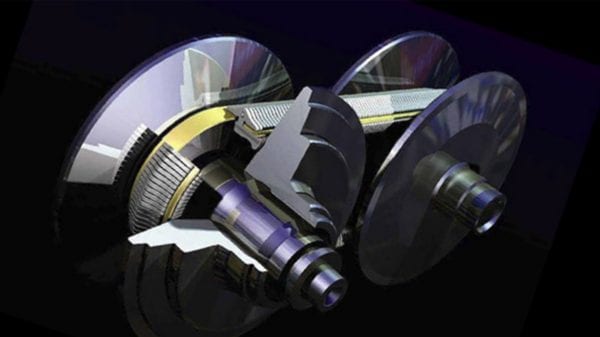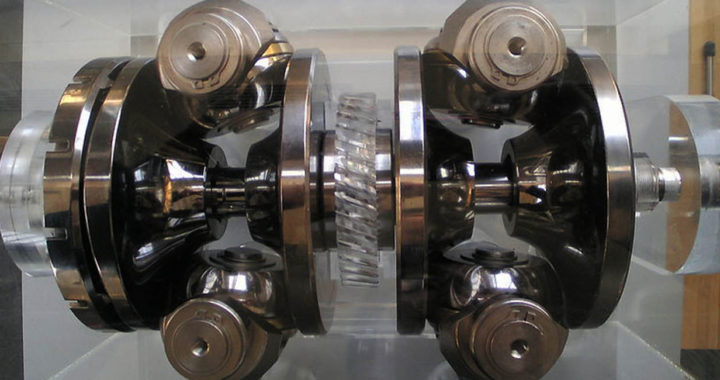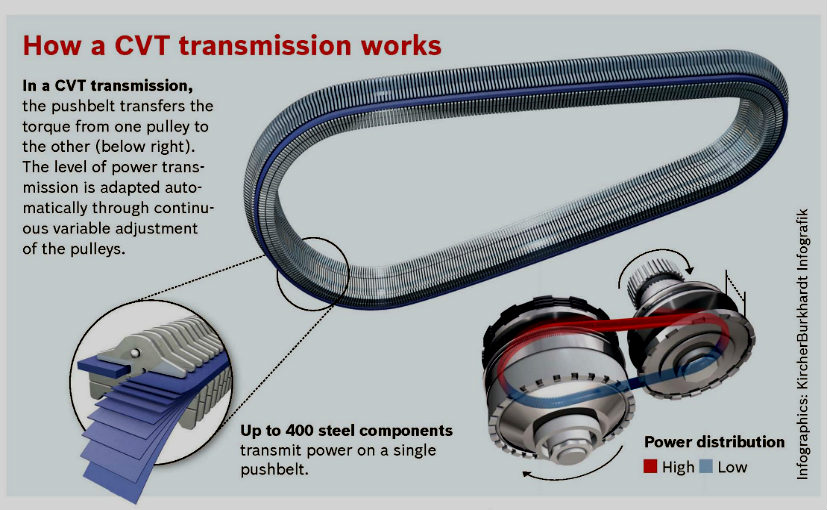
A continuously variable transmission (CVT) is a type of automatic car transmission system that uses a pulley and belt system to provide an unlimited range of gear ratios. In 1984, the Japanese automobile manufacturer, Subaru, introduced the electronic continuously variable transmission (ECVT) in a hatchback called Subaru Justy. Continuously Variable Transmission (CVT) Basics Basically, the continuously variable transmission―incorrectly referred to as CVT transmission at times―is a transmission system in which there is infinite variability between the highest and lowest gear ratio in the absence of gear shifts. The speed is increased or decreased by altering the.
A growing number of automobile manufacturers are looking at how the presence of a continuously variable transmission can improve the performance of a vehicle, including sport utility models, instead of equipping a conventional automatic. This technology has been available in some passenger cars since 1989, but it is still an option that is new to some makes and models.
With the continuously variable transmission, you will discover that this technology can quickly find the exact ratio that is required to provide power while driving without the need to shift. The standard automatic design for transmission can sometimes struggle in this situation when there is a heavy load.
The Subaru continuously variable transmission (CVT) works hard to push the limits of what is possible with automatic shifting. Drivers receive the benefit of being able to point-and-steer while driving without worrying about a clutch or what gear they happen to be in while on the road. It will continuously transition between the lower and higher gear ratios to ensure that you can maximize your fuel economy without reducing the amount of power that is available during acceleration.
Most automatic transmissions require you to lose some of the vehicle’s momentum when you are driving, but that is not the case with the Subaru CVT. You will receive this technology standard on several models, including the Legacy and Outback. It is available for the Impreza, Forester, and XV Crosstrek as well. The WRX offers a sport version of the CVT which offers its own set of advantages and disadvantages to consider.
If you are in the market for a new vehicle and are thinking about purchasing a Subaru, then here are the pros and cons of their continuously variable transmission to consider.
List of the Pros of a Subaru CVT Transmission
1. CVT technologies offer high levels of fuel efficiency to the driver.
The most significant benefit of the Subaru CVT technology is that it offers a much higher level of efficiency to the driver. Vehicles which offer this technology are often rated as one of the most fuel-=efficient vehicles in their class. It is not unusual for the mid-sized sedans that Subaru equips with this technology to achieve at least 38 miles per gallon on the highway. Although most hybrid automakers equip CVTs to their vehicles today, the added benefit of not losing momentum with this particular technology gives it a significant advantage to those who rank performance as one of their top objectives.
2. Drivers receive more responsiveness from their vehicle going up a hill.
If you live somewhere that requires driving up a steep incline regularly, then you are going to appreciate what this technology can provide for your Subaru. With the continuously variable transmission, you will discover that this technology can quickly find the exact ratio that is required to provide power while driving without the need to shift. The standard automatic design for transmission can sometimes struggle in this situation when there is a heavy load.
The reason for this benefit is that the Subaru CVT transmission provides you with an unlimited number of gear ratios. Because there are infinite options available to you, it becomes easier to maintain a steady cruising speed without experiencing a loss of momentum. Your engine will always be in its optimum range for power.
3. It can offer a smoother ride to all of the vehicle’s passengers.
Have you ever sat in a vehicle that was struggling to find the correct gear to use when the driver was navigating an incline or trying to pass someone quickly? Those rapid shifts can create a lurching sensation that can sometimes even cause an injury if the movement is sudden and severe. Thanks to Subaru’s CVT technology, you will receive a smoother ride because the shifts are seamless in almost every situation. That means there is more subtlety to the shifting mechanism as you are driving, which creates a better experience for everyone.

4. There are fewer operational parts to worry about in the Subaru CVT.
When you compare the total number of mechanical parts in the Subaru CVT transmission compared to the planetary-gearset design, you will find that there is a simpler construction available to you as a driver. The box uses a series of adjustable conical pulleys that connect via a steel chain or belt. Depending on the speed that you drive, the sides move toward or away from one another, passing the chain into grooves that form between them. Although there are stories of the CVT wearing out in less than 60,000 miles, the simplistic design usually tends to have things go wrong less often.
5. The CVT weighs less than a conventional transmission.
Because there are fewer parts involved in the construction of the continuously variable transmission from Subaru, the weight of the product is often lighter than it would be if a traditional one was installed on the vehicle. The CVT is also more compact than the traditional design, providing more space to develop other systems when desired. Thanks to the lower weight requirements, the powertrain doesn’t need to work as hard. That means you receive a secondary bump in your fuel economy that goes beyond what you receive when you are in the correct gear consistently.

List of the Cons of a Subaru CVT Transmission
1. The cost to replace a Subaru CVT can be quite high.
The most significant disadvantage the drivers face with a continuously variable transmission is that this component tends to fail more often compared to other transmission technologies that are employed on non-hybrid vehicles. Many of the units can last for about 100,000 miles before they require a replacement. The overall cost for the average CVT is already between $3,000 to $5,000 to get your vehicle back on the road.
Subaru transmissions are even more expensive. Entry-level pricing for the equipment is just under $6,000. When you add in the labor required to take off the old one to replace it with the new option, the cost can be higher than $8,000. If you are outside of your warranty period, then that price makes it a temptation to purchase a new vehicle instead.
2. It does not stand up to high-performance situations.
The continuously variable transmission from Subaru does not withstand the horsepower that the older manual or automatic designs could offer. That is why you will see lower HP ratings on the vehicles which use this technology. Although that means you have a more fuel-efficient design to use that can reduce emission levels, you are also equipped with less acceleration and pulling power with your vehicle. If you look at the specs of the Subaru CVT for most models, you can tow about 1,000 pounds. For some owners, that may not meet their overall needs.
It is essential to remember that when you purchase a Subaru with a CVT, your vehicle is focused more on practicality than sportiness. Driving one is about the complete opposite of “fun” for most drivers who get behind the wheel.
3. Rebuilds are almost impossible with the Subaru CVT transmission.
Approximately 90% of the CVTs equipped to Subaru models require a complete replacement instead of a rebuild. This disadvantage occurs because the damage that happens to the transmission is so extensive that it is not even worth attempting to rebuild it as a way to save some money on this repair. Even when a rebuild is possible with this technology, owners often find that the parts for it are still exceptionally expensive and often difficult to locate.
4. The sound of a CVT is bothersome to a majority of drivers.
If you have never driven with a continuously variable transmission in the past, then the sounds that this technology makes are going to be a shock at first. They are programmed in a way that makes some drivers believe that they are not working properly. Although the sound isn’t as bad as a manual transmission being forced into gear, the audio coming from underneath the seat can make it seem like the vehicle is not performing as it should.
5. The Subaru CVT can sometimes hang at the higher RMP.
Even when there are simulated stepped gears programmed into the CVT, there are times when the transmission will hang or pause at the top of your RPM spectrum. This issue often occurs when you are climbing a steep ascent at a high rate of speed, like climbing a mountain pass while driving on an interstate highway. Even if you release the accelerator pedal, the gears need time to wind down from where they were performing, which can lock you into the higher RPM for more than a couple of seconds. Then the response to the need to accelerate again can be delayed.
6. The costs of transmission fluid are higher with the CVT design.
One of the easiest ways to ensure that your CVT can operate efficiently over a long time is to have the transmission fluid changes according to the schedule provided by Subaru. Having this service performed at your dealership can be as high as $250, especially if you are replacing the filter and pan. If you put off this service, then many of the issues that can cause a premature breakdown of the transmission become more likely. That includes valve body wear, damaged pulleys, and overheating.
Most drivers will also need to visit a trusted mechanic or their dealership to have their fluid checked, which can be a costly service as well.
7. Trying to pass someone with the Subaru CVT can be challenging.
You need to time your passes when driving with this continuously variable transmission carefully because there is no guarantee that you will receive a jump into a higher RPM range for acceleration. If you are trying to perform a quick pass on a two-lane road with another driver coming from the opposite direction, you will discover that the speed you receive is often less than sporty. You will want to give yourself a little extra time to complete the pass to ensure that you can get back in your lane safely.
Subaru Continuous Variable Transmission
The pros and cons of the Subaru CVT transmission show us that it is possible to reduce emissions without robbing a vehicle of its overall performance to an extreme level. Although there are some adjustments that you will need to make for this to be a successful experience, the primary concern always involves cost. Although the upkeep and running costs are traditionally low, replacement costs are 50% higher than what you would pay for a traditional option.

Brandon Miller has a B.A. from the University of Texas at Austin. He is a seasoned writer who has written over one hundred articles, which have been read by over 500,000 people. If you have any comments or concerns about this blog post, then please contact the Green Garage team here.
The next-generation Xtronic Continuously Variable Transmission® eliminates gears, thus it transfers power from the engine to the wheels very effectively while shifting smoothly. The CVT holds the engine at the best possible RPM for the conditions at hand, offering responsive power for passing or towing when needed and quiet efficient running at cruising speeds or around town.
Towing a Trailer with a CVT-equipped Vehicle
It is fine to tow a trailer behind a CVT vehicle as long as the maximum towing capacity limit is within the vehicle's towing capacity and does not exceeded the allowable weight when the load and the passengers are accounted for unless it states in the vehicle Owner’s Manual to never tow a trailer. Drive gently when towing, and avoid parking on slopes. However, if parking on a hill is unavoidable, there are certain steps to take. Apply the brake pedal. Have the vehicle in the D (Drive) position if facing uphill and the R (Reverse) position if facing downhill.
- Have someone else place blocks on the downhill slope behind the vehicle and trailer wheels.
- Slowly release the brake pedal, feeling the blocks absorb the load.
- Engage the parking brake.
- Shift the gear into P (Park) position.
And when leaving, put the transmission into gear before releasing the parking brake.
Tow Mode
Continuous Variable Transmission
- Using tow mode (if so equipped) is recommended when pulling a heavy trailer or hauling a heavy load. Press the TOW MODE switch to activate tow mode. The indicator light on the TOW MODE switch illuminates when tow mode is selected. Press the TOW MODE switch again to turn tow mode off.
- Tow mode is automatically canceled when the ignition switch is turned OFF.
- Tow mode includes the following features:
– Grade logic – Adjusts transmission shifts when pulling a trailer or hauling a load up a grade.
– Downhill Speed Control (DSC) – Automatically downshifts when driving down a grade with a trailer or hevy load to help control vehicle speed. - Driving the vehicle in the tow mode with no trailer/load or light trailer/light load will not cause any damage. However, fuel economy may be reduced and the transmission/engine driving characteristics may feel unusual.
